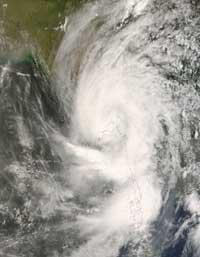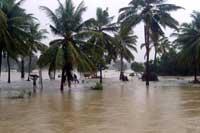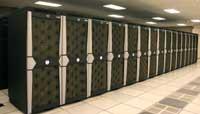Supercomputer to announce cyclones

Those in the North Atlantic are called hurricanes, those in the Pacific, typhoons and those in the Indian Ocean, cyclones. But all these terms call the same phenomenon: the tropical cyclone. This is called the tropical storm system, with a low pressure center and numerous thunderstorms that cause strong winds and rains.
Fortunately, storms, wind gusts and rains do not cause so much damage. Elsewhere in the world, yes. The data is illustrative: Cyclones have caused nearly two million deaths in the last 200 years. Nargis, for example, raped Myanmar in 2008, with 78,000 dead and 56,000 missing.
This type of disaster has not been lacking in recent years and, as far as possible, the effort to prevent it. However, experts say that the data that can be obtained from the new system could be more accurate than any other.
In the US, a member of the University of Maryland has developed a computer model that accurately foresees cyclones. This has taken advantage of the processing capacity and atmospheric data of the NASA supercomputer Pleiades.
Simulation

With atmospheric data prior to arrival at Nargis Myanmar, he created a retrospective simulation. And he says this has allowed the cyclone to be predicted five days earlier. “If we had a simulation in 2008, before the cyclone, meteorologists would have warned the population and avoided many deaths.” However, recently the method has arrived that seems to allow it.
In short, it is based on an advanced computing method. Through it millions of mathematical equations can be made with data from atmospheric variables such as wind speed, temperature or humidity. Subsequently, the calculations, converted into digital data, provide information on the location of the cyclone and the atmospheric conditions.
This information is reflected in geographical maps and is contrasted by scientists with that observed around some phenomenon of the past such as Nargis to evaluate the accuracy of the method. The more faithful the results of the real case reflect, the more certainty the predictions of the future will of course.
The researcher believes that to predict hurricanes it is “necessary” to have a model that represents the initial conditions (air movements, temperatures and rainfall) to simulate how these conditions evolve and interact both locally and globally. In this way they would accurately represent the cyclone in motion.

Supercomputer Pleiades. (Photo: NASA Ames Research Center/David Robertson).
“In large areas we know what happens. We therefore need high-definition simulations to know the conditions in the smaller fields. Since 2004 we have defined a series of milestones and now we have calculation models 10 times more accurate than the conventional climate models we had,” he said.
The model may not serve to predict other phenomena other than cyclones. However, this system that puts supercomputing at the service of meteorology can help boost other prediction methods and designs.
Published in 7K.
Buletina
Bidali zure helbide elektronikoa eta jaso asteroko buletina zure sarrera-ontzian











